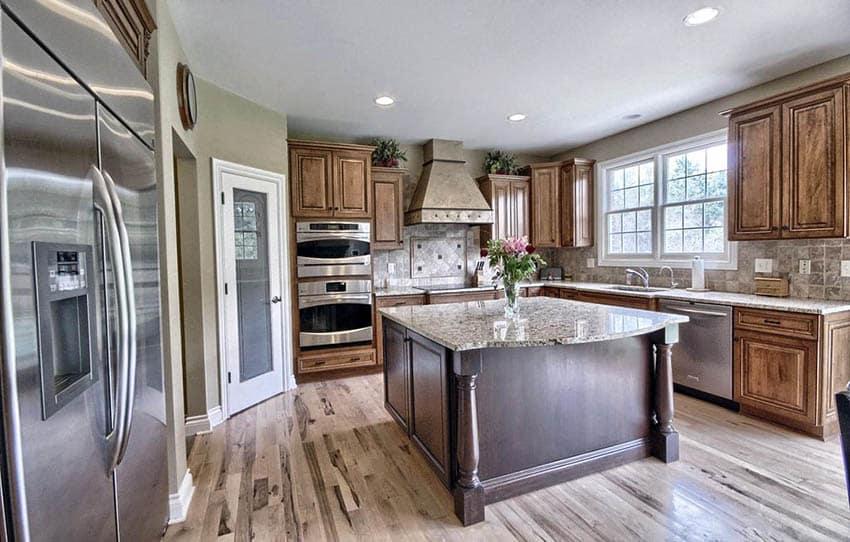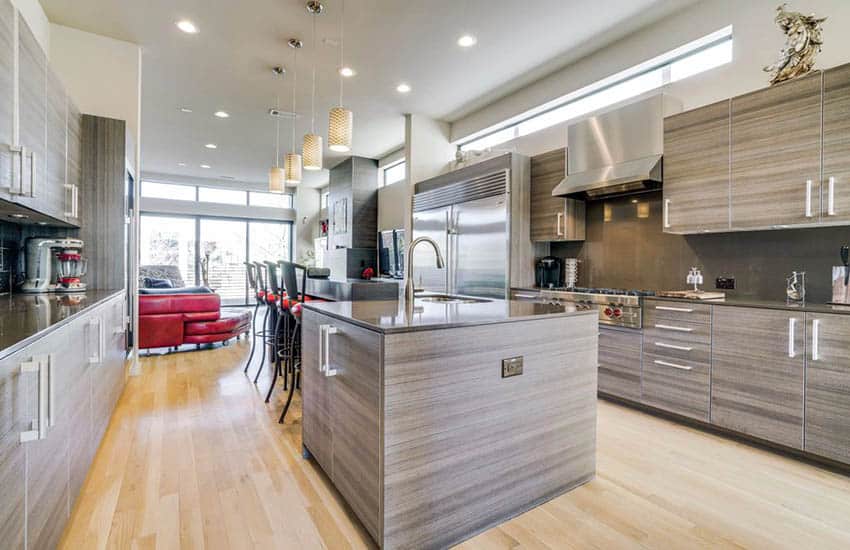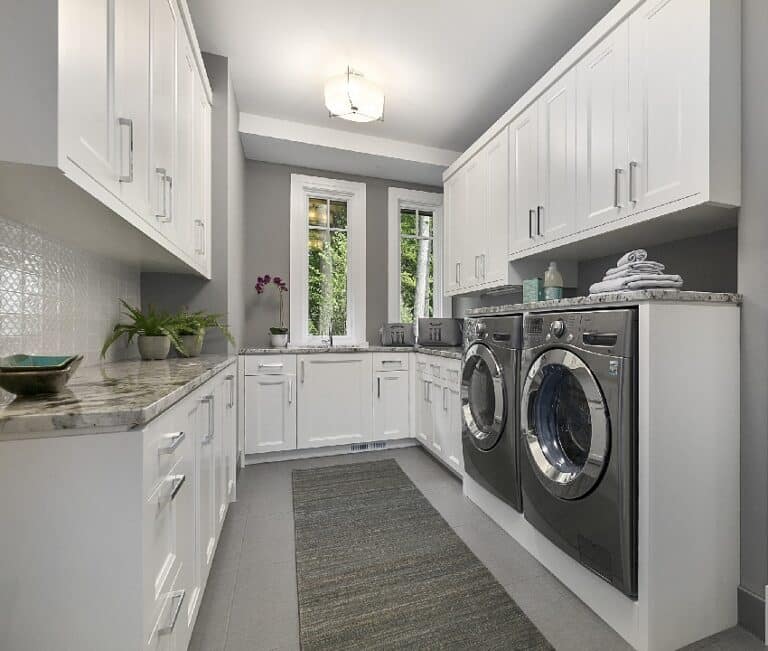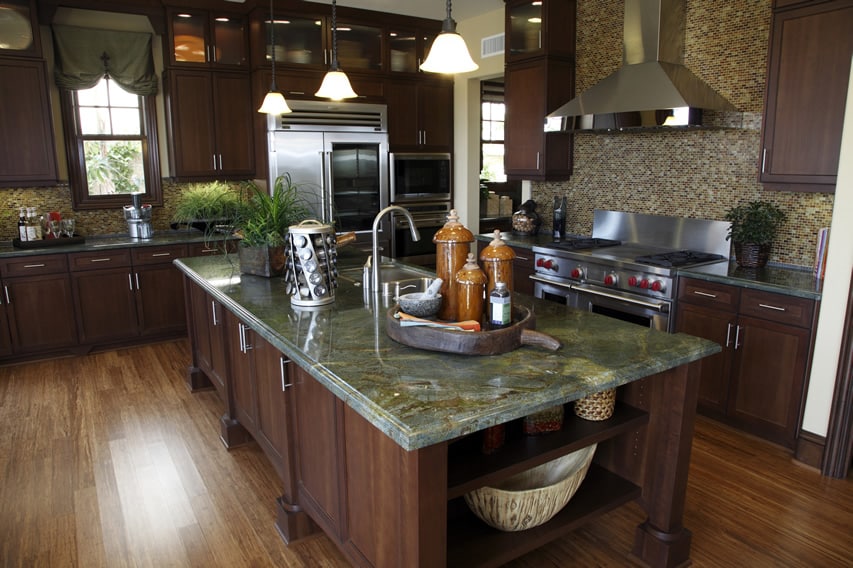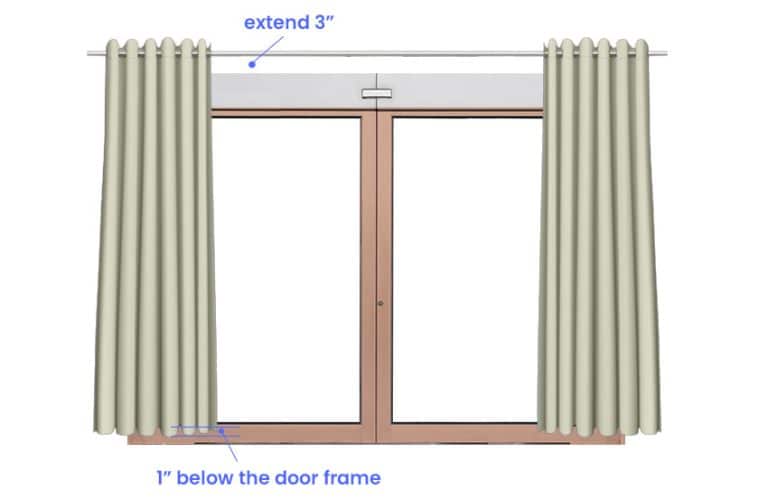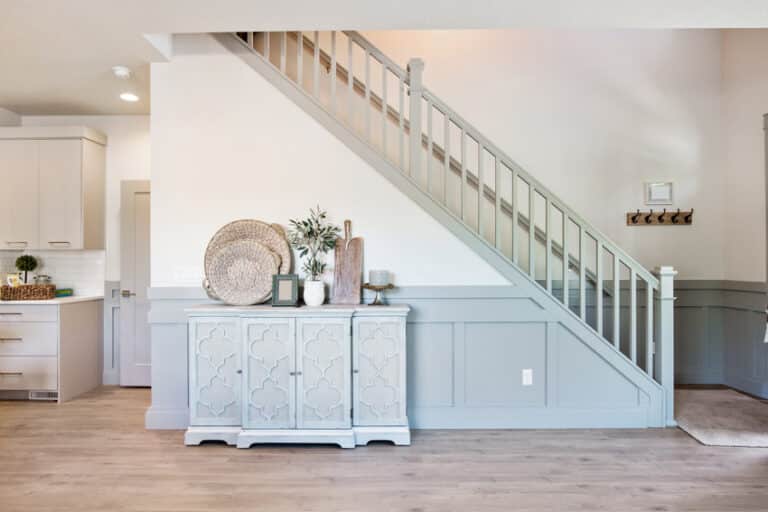Maple Hardwood Flooring (Design Ideas)
Here we share details about maple hardwood flooring including pros and cons, solid vs engineered and prefinished vs unfinished.
When it comes to hardwood flooring, you have a lot of options. Before you choose, though, you need to know everything there is to know about the pros and cons of each species to select the best one for your needs.
Maple hardwood is a popular choice for interior designs due in large part to its durability and its beautiful look.
Maple is one of the hardest hardwood flooring options with a Janka score of 1450. Well cover this in more details later. However, this makes maple floor durable, harder than oak, and less prone to denting. In addition its available in a wide range of shades to fit your personal style.
This article is part of our larger types of hardwood floors gallery. In this guide, we are going to take a look at everything you need to know about maple hardwood flooring.
Types of Maple Wood
When you are looking to buy maple wood flooring, you have two main categories to choose from. That is hard maple and soft maple.
Hard maple usually refers to a specific type of wood: Acer saccharum. This is more commonly referred to Rock Maple or Sugar Maple. It might also refer to another species of maple, though, called Acer nigrum which is more commonly known as Black Maple.
Other than flooring, you will find hard maple used to make furniture, cabinets, and some other surprising items such as billiard cues. It should be noted that hard maple is still a rather soft wood when compared to other woods.
Soft maple doesn’t refer to a specific type of maple. Rather, it refers to a series of types of maple wood. For example, Bigleaf Maple, Red Maple, Silver Maple, Box Elder, and Striped Maple are all types of soft maple. By comparison, soft maple isn’t as strong or, as the name suggests, as hard as hard maple.
The level of hardness in soft maple species differ, though. For instance, Box Elder and Silver Maple aren’t quite as hard as Bigleaf Maple or Red Maple. However, all of these are softer than hard maple.
This is measured on the Janka hardness scale which we will take a look at later. It is important to note that soft maple isn’t too soft to use as flooring, it is just soft by comparison to hard maple.
Solid Maple
Solid maple flooring is exactly what it sounds like – each piece of wood is made of a single, solid piece. These are usually made in planks that are shaped on the sides and ends so that they fit together as seamlessly as possible.
Solid flooring also usually has a protective layer on top of the wood itself. This way, the floor is less likely to scratch or dent. This protective layer is typically clear so that features such as the grain and color aren’t affected.
When it comes to sizes, solid maple flooring is usually sold in a thickness of ¾ inches. You can, though, find solid maple flooring in a wide variety of lengths and widths. The exact sizes will depend on the manufacturer you go with.
As far as installation goes, solid hardwood floors are typically installed with nails as opposed to stapling or gluing the flooring into place.
The biggest advantage of solid hardwood flooring is that it is durable. This is because it is solid wood throughout – it isn’t cut with any weaker material. As such, it can be sanded, stained, and refinished many times throughout its lifetime.
Engineered Maple
Engineered maple flooring is pretty different from solid maple flooring. Rather than being one solid piece, engineered maple flooring is made up of layers.
Typically, the top and bottom layer is made of maple. In between these layers, there are usually 5 to 7 layers of plywood that cross in different directions rather than laying straight.
There are a lot of benefits of engineered hardwood flooring. For one, it is less likely to expand and contract like many types of wood flooring do in response to temperature and humidity. This means your flooring is less likely to buckle.
You can also consider engineered flooring for areas that are more prone to these conditions such as basements. Wide plank floors often need more space for contracting and expanding. It’s always a good idea to use narrower planks for area of high humidity or weather fluctuations such as the basement.
The majority of engineered hardwoods manufactured for floors utilize a tongue and groove attachment system. This means one plank fits into the groove of another plank creating products that are less likely to need repair from damage.
When installing engineered maple flooring, you shouldn’t nail them like solid maple flooring. Instead, engineered maple flooring is usually stapled or glued but it can also be installed as a floating floor if the pieces are made to lock together.
Prefinished Maple
Another thing you have to consider when you are shopping for maple hardwood flooring is whether you want prefinished or unfinished maple hardwood flooring. The first step of this is to understand what these options mean.
Prefinished hardwood flooring is what we mentioned earlier when we noted that most solid wood flooring has a layer of protection to keep it from getting scratched or scraped. You might also hear of prefinished hardwood flooring as factory finished flooring.
Factory finished flooring might also be stained when you purchase it. This means that the natural coloring of the flooring is altered to a different aesthetic.
If your wood flooring has a factory finish, you might have an easier time installing it. This is partially because you don’t have to finish it yourself, of course. It can also be a better finish since it is done in a factory controlled environment which takes many variables away.
Even if you get prefinished maple flooring, though, you can still re-sand and refinish these floors but they are easier in the sense that this isn’t required.
There are also distressed hardwood floors that have been roughed up in the factory to create a rustic wire brushed look. This provides added character to the wood to create visual interest and charm.
Unfinished Maple
Your other option is to get unfinished maple hardwood flooring. This type of flooring, of course, doesn’t have the top layer to protect the flooring. It also doesn’t come prestained either. This type of flooring is also referred to as site finished flooring.
When you get this type of flooring, you have a few extra steps to installation. After the initial installation, you (or the laborer installing the flooring) will need to sand the flooring down, stain it, and add a protective layer if you don’t want simple bare wood flooring.
Unfinished hardwood flooring can be great if you want a unique finish or if you want to make sure your flooring matches the rest of the interior of your home or have a custom finish.
This type of flooring also allows for customized details such as inlays. Most unfinished flooring is less expensive than prefinished flooring as well.
Maple Hardness Rating
The Janka test is what is used to measure the hardness of a piece of wood. In other words, it is used to see how it holds up against regular wear and denting.
This is typically done by measuring the force it takes for a steel ball with a diameter of 11.28 millimeters in a sample of the wood that is being tested. When this is done, how dented the floor is determines the Janka hardness rating of the wood flooring.
As far as measurement, Janka hardness is typically measured in pounds-force (lbf). The higher the lbf, the harder the wood is. For instance, Australian Buloke has a rating of 5,060 lbf, making it one of the hardest woods while Balsa is the softest at only 22 lbf.
When it comes to maple, it does depend on the maple you are looking at. Of course, hard maple has a higher Janka rating at 1450. Generally speaking, soft maple has a Janka rating of about 950. There can be some slight discrepancies depending on the type of soft maple that you use.
This high amount of durability makes it a solid pick for use in high traffic areas such as the living room or kitchen. However, do consider the pros and cons of using hardwood flooring in the kitchen as it may require added maintenance to keep it looking beautiful.
Maple Wood Price
A major consideration that you need to look at when you are planning to use maple wood flooring in your home is how much it will cost you. When you are considering price, though, it depends a little bit on what you get.
Maple is very affordable. This is largely because it is so available – a higher supply, in this case, means lower prices.
Generally speaking, a square foot of unstained maple flooring will cost you between $6 to $10. For stained or sealed maple flooring, you are looking at $8 to $15 per square foot. These costs are considerate of installation costs.
So, what causes these ranges to vary? Well, it depends on whether you are buying solid maple flooring or engineered maple flooring, for one. Solid maple flooring isn’t cut by cheaper wood so it is typically more expensive.
Engineered maple flooring, on the other hand, is usually a layer of maple wood, a few layers of plywood, and then a final layer of maple wood. This variation of higher quality wood with cheaper wood makes the cost of your maple flooring per square foot a little cheaper.
You might also find that costs vary depending on the type of maple wood that you use on your floors. Prices might also change based on where you live. For example, Bigleaf Maple can be found locally in the Northwestern United States so it won’t be quite as expensive.
Maple Flooring Pros and Cons
There are a lot of benefits to purchasing maple flooring. On the other hand, there are also some cons to maple flooring that you should consider before you buy. The key to no regrets in purchasing is to weigh them according to your priorities and preferences. Here are the pros and cons of maple flooring that you should expect.
Maple Flooring Pros
Maple flooring is popular for interior designs for a reason. Here are the benefits that make it easy to choose maple flooring above anything else.
Hard and Durable – For one, it is durable and hard. When it comes to durability, maple is only second to hickory. Being second only to hickory, maple is high on the Janka hardness scale, measuring 1450 pound-force.
This means that it is highly durable and less likely to dent, making it a practical option for places with high traffic, like busy homes and public areas like gym floors and bowling alleys.
Easily Available – Maple flooring is widely available in America and it’s easy to find a quality one in local stores.
Very Affordable – It is very affordable primarily because it is largely available with high supply, dropping the prices down. Prices range from $6 to $10/square foot.
Wide Range of Colors – Maple flooring comes in a variety of colors, including beige, brown, gray, and red. This gives you a lot of options for color schemes and styles.
Timeless and Classic Aesthetics – It is a great clean backdrop for light and dark furniture and accessories, which also work flexibly with both traditional and rustic homes.
Consistent Fine Graining Pattern – Maple has fine consistent grains which can also be considered as a stylish grain pattern, arranged in a homogenous and uniform appearance.
Eco-friendly – Maple has a short growing period, which means it grows plentiful and choosing this wood as a material is better than slow-growing trees like walnut or oak.
Improves Indoor Air Quality – Maple is dust-resistant and so can help improve air quality in a room by controlling both airborne contaminants and allergens.
Easy Cleaning and Maintenance – Additionally, maple flooring is also easy to take care of. All you need to do is sweep and mop regularly and you will find that your maple flooring will look like new for years to come.
Frequent sweeping and weekly water and soap mopping are enough cleaning process for maple flooring. Make sure to buff it every two years though to preserve its brilliance.
Maple Flooring Cons
While maple flooring offers many benefits you can enjoy, there will always be the other side of the coin. Here are some of the disadvantages you might encounter when you choose maple flooring for your home.
Easily Scratches and Prone to Marks – Unfortunately, when compared to other hardwood flooring, scratching is more of a problem with maple. This is because the grain is smooth which allows scratches to show. This effect, naturally, worsens the bigger the scratches are. Minimize the risk using a good protective sealant.
Difficult to Stain – Maple doesn’t absorb stains well, which means that you would have to settle to its natural color, however dark or light it might be. If you force it, you might end up with uneven patches. If really needed though, you might want to pass the task to professionals.
Sensitive to Heat and Humidity – Maple may be hard but not as stable as other woods, making it susceptible to weather changes and temperature fluctuations. They can end up split, warped, or shrinked, which is why keeping the room at a constant humidity and temperature level is important.
Since maple is more prone to moving with humidity than other woods it can be combated by using a humidifier during drier months if you live in a climate that has heavy fluctuations of humidity.
Fades over Time – The coloring of maple flooring can fade over time, especially when exposed to direct sunlight at all times. Minimize it by using water-based sealants and avoiding direct contact to sunlight.
Maple Vs Oak Flooring
One option that you have when you are choosing flooring is maple flooring vs oak flooring. So, how do these options compare?
When it comes to coloring, maple has more hues. This is great if you are looking for something that matches the interior of your home. If you are trying to match existing maple flooring in your home, you might have a hard time. Oak, on the other hand, gives a general, traditional look.
On the aspect of performance, both floors are rather durable. With either option, you are making an investment that will last you years to come.
The main difference between white oak and maple is the color. Oak is darker and more dramatic which is great for older homes but it can be a contrast when it comes to more modern decor. If you are looking for something to match modern decor, you might want to lean towards maple flooring.
Maple Flooring Colors
In general, maple has a light coloring. The range of colors ranges from nearly white flooring to darker maple. Lighter colors can make a room look more open and larger. Darker colors tend to make rooms look warmer and more traditional.
The coloring depends not only on the type of maple you are using but where the wood comes from on the tree.
Sapwood, or the outer trunk’s wood, gives the wood a lighter, creamier color or a yellowish-tan. However, if the wood is taken from the center of the trunk – heartwood – it will be darker, usually a red-brown or gray-brown.
Staining Maple Floors
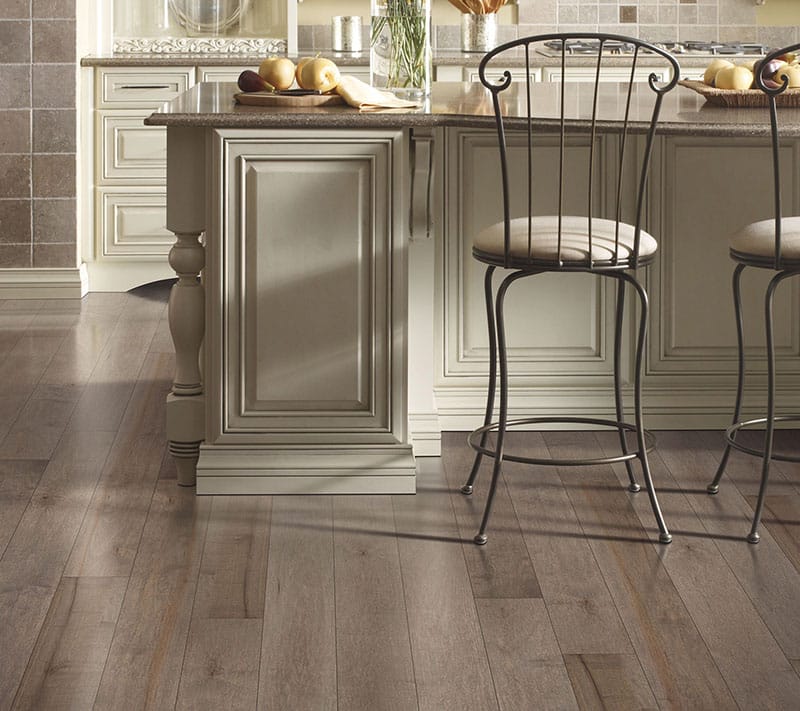
Before staining your wood floors, make sure to test a sample on a small out-of-the-way section to see how it looks after drying.
If you like how the stain looks you will want to move on to the next step before staining your maple floors, which is to thoroughly sand them. This will give you a smooth floor but you’ll have to be careful. When you sand a floor down, you will highlight any imperfections in the floor.
Afterward, you will want to make sure to clean up carefully. You will also want to pop the grain with water to raise the grain.
Then, you will want to apply the stain you are using. You can choose between a traditional resin-based stain or you can use a dye that is water, solvent, or alcohol soluble. Make sure that you apply the stain or dye evenly and allow it to set to make sure you get an even coat.
Refinishing Maple Floors
You should first look and see if you need to refinish the entire floor. Before you refinish it, you will want to make sure it is clean – sweep and mop well before you get started. Then, you will want to use floor putty to fill any gaps.
Then, you will follow the same steps – sand down and put the stain of your choice on the floor. Finally, you will want to apply either urethane or penetrating sealer to the floor and allow it to dry for 48 hours.
Did we cover all of the questions and information you have regarding maple wood? Let us know what we missed and your experience using this wood for your own home remodel projects. For more related tips visit our page on how to match wood flooring with wall colors.



